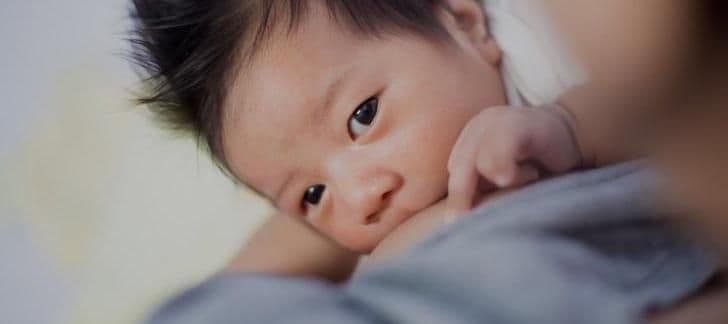Most Common Food and Nutrition Myths During Breastfeeding
Breastfeeding
Obie Editorial Team
 By: Rachel Neifeld, RD, CDN
By: Rachel Neifeld, RD, CDNMyth: Alcohol is still off-limits.
Fact: New moms have the go-ahead to pop the cork off that celebratory champagne once the baby is born. The key to drinking alcohol during breastfeeding is to control portion size and have the correct timing. Waiting two hours to breastfeed after having a serving of the alcohol will essentially prevent its transfer into breast milk. This is the amount of time it takes for the body to metabolize and excrete alcohol so that none passes to the baby.
As it is necessary to feed frequently- every three hours- in the beginning stages of breastfeeding, if a woman would like to consume an alcoholic beverage it’s a good idea to consume it directing after a breastfeeding session. This will ensure that a full two hours has passed before the baby needs to be fed again.
One serving of alcohol is equal to one 12 ounce beer, a 5 ounce glass of wine, or 1.5 ounces of liquor.
Myth: I should return to eating the same amount of food as before I was pregnant so I can lose the baby weight.
Fact: False! Breastfeeding women should actually be consuming slightly more calories than when pregnant. The amount of energy needed to support lactation is equal to about 500 calories a day (versus the 200-300 extra calories needed during pregnancy) so the baby weight will still come off even when these extra “breastfeeding” calories are consumed. Try to consume an extra two healthy snacks a day each containing about 250 calories. Keep these easy-to-eat foods within reach of where you’ll be breastfeeding. Examples of healthy snacks include trail mix, bananas, nuts, yogurt, string cheese, and crackers.
Fact: I should stay away from nuts, as they may lead to an allergy
Myth: When it comes to potential food allergens, there is no reason to avoid specific foods unless the mother herself has an intolerance or allergy to the food or if there is a strong family history of a food allergy. The latest research shows that it is actually beneficial to expose the baby to nuts during pregnancy and breastfeeding. If a baby is exposed early on when his or her immune system is developing, the food will be recognized as “safe” for the body and will therefore not be attacked in the form of an allergic reaction when the child is exposed to peanuts or tree nuts later in life.
Myth: I still need to avoid sushi and unpasteurized dairy.
Fact: The cravings for spicy salmon rolls and Nova Scotia lox become intensified for many women as they near their due dates, so it comes as a relief when raw fish and unpasteurized dairy products are safe to consume during breastfeeding. During pregnancy, the immune system is weakened and women are at higher risk of food-borne illnesses including listeria and salmonellosis. This is no longer the case during breastfeeding, though it is important to continue to limit mercury intake from larger fish such as tilefish, king mackerel, shark, and white albacore tuna. If high mercury fish are consumed, limit intake to no more than one serving per week.
Myth: I should still limit coffee to more than one cup a day.
Fact: Coffee-lovers rejoice! That morning cup of java is now welcome back into a breastfeeding woman’s daily routine. If fact, a few cups of coffee can be safely consumed each day as long as other sources of caffeine such as those found in tea, chocolate, soda, yogurt, and ice cream are being monitored as well. The key is moderation, so if a “tall” Starbucks coffee, which has 375 mg of caffeine, is consumed it may be a good idea to swap coffee ice cream for another flavor at dessert, or make that afternoon cup of tea decaf. Similar to alcohol, it may be a good idea to consume caffeine directly after a breastfeeding session so that two full hours can pass before breastfeeding again, thus decreasing the chance that some of the substance will pass through breast milk.









